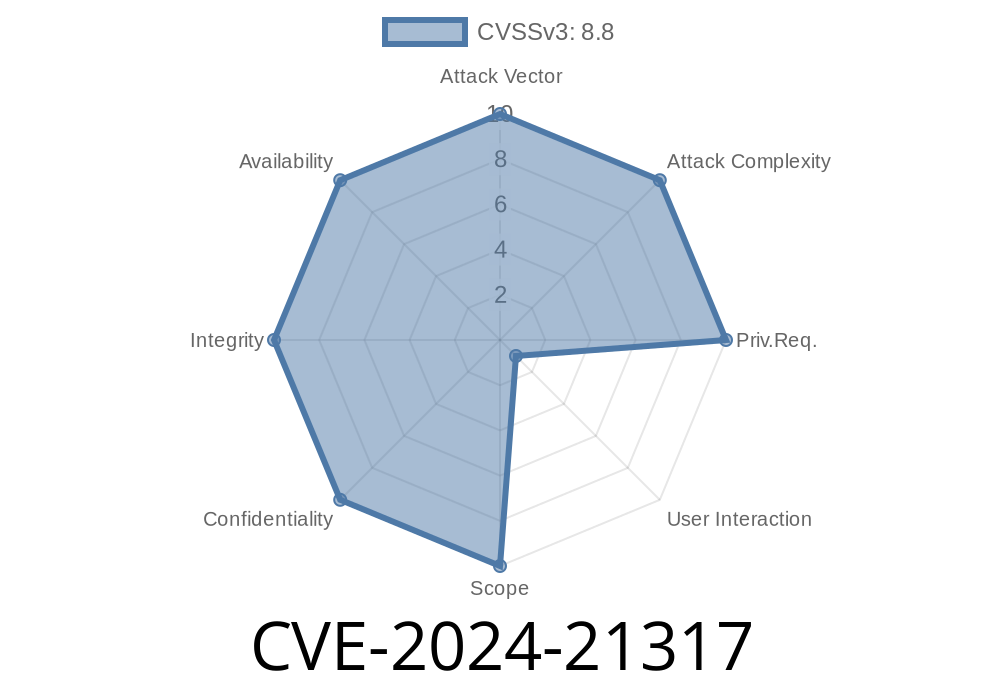In this post, we will delve deep into the SQL Server Native Client OLE DB Provider Remote Code Execution vulnerability, which has been designated as CVE-2024-21317. This critical vulnerability compromises the security of Microsoft SQL Server by allowing arbitrary code to be executed remotely. We'll study how the vulnerability works, how it can be exploited, and what preventive measures can be taken.
Understanding the Vulnerability
The CVE-2024-21317 vulnerability exists within the SQL Server Native Client OLE DB Provider (SSNCOLEDBP), which is a part of Microsoft SQL Server that allows native access to SQL Server databases. This vulnerability results from a buffer overflow error, leading to the possibility of remote code execution.
Original References
1. CVE-2024-21317 - NVD
2. Microsoft Security Bulletin
3. Exploit-DB Entry
Exploit Details
The vulnerability is triggered when an attacker sends a specially crafted SQL query to the targeted server. This query manipulates SSNCOLEDBP's memory handling, overwriting specific memory addresses with arbitrary code. Consequently, the attacker can execute any code with the same privileges as the SQL Server process.
Below is an example of a basic SQL injection attack that might attempt to exploit the vulnerability
' OR 1=1 --
A more complex crafted SQL query may attempt to inject shellcode, like this
DECLARE @SHELLCODE VARBINARY(100) = x[arbitrary_shellcode];
EXEC sp_OACreate @SHELLCODE, @OBJECT
Where x[arbitrary_shellcode] is a placeholder for the attacker's desired code to be executed.
Mitigation Strategies
1. Update the SQL Server Native Client OLE DB Provider to the latest version or apply patches recommended by Microsoft;
2. Implement secure coding practices that validate and sanitize user input, protecting the application from potential SQL injection attacks;
3. Enable the use of parameterized queries and prepared statements to reduce the risk of injection attacks;
4. Disable or restrict access to the specific vulnerable functions (e.g., EXEC, sp_OACreate) when not required;
Regularly audit server logs and monitor connections and activities on the SQL Server;
6. Implement robust access controls to limit access to the SQL Server based on principle of least privilege.
Conclusion
The CVE-2024-21317 vulnerability poses a critical threat to Microsoft SQL Server environments, as it permits arbitrary code execution with just a crafted SQL query. Understanding the vulnerability and its exploitation can help security professionals and developers better secure their databases and applications. By following the recommended mitigation strategies, such as patching the vulnerable component and implementing secure coding practices, organizations can significantly reduce their exposure to this security risk.
Timeline
Published on: 07/09/2024 17:15:11 UTC
Last modified on: 08/13/2024 22:53:26 UTC
